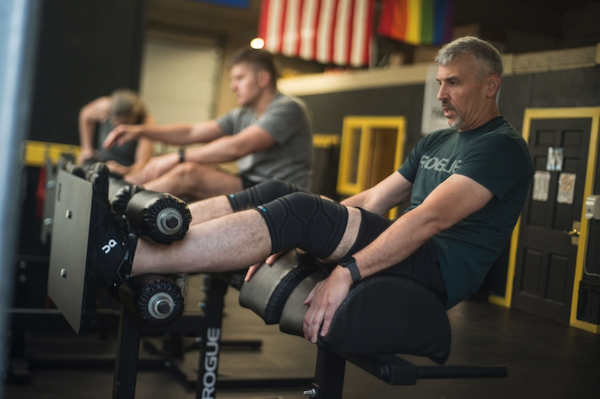CrossFit: Features (Selections)
Bridge Over Troubles’ Slaughters
It was well past 1 a.m., and darkness blanketed the city of Derry, Northern Ireland. The streets were barren save for two teenage boys and their paint.
PRs and Parkinson’s
Beneath the dance club’s flashing lights, Jules King turned and twirled her grief away. It was July 18, 1999 — her 20th birthday — and only a month after the love of her life and father of her 2-year-old daughter was killed in a car crash.
How Steven Smith Beat Cancer With CrossFit
The ultrasound technician was a friendly, chatty woman. She and Smith laughed and joked as she drew her wand along the right side of his neck. “And then she gets to this side,” Smith recalled, pointing to the left side of his neck, “and just a few seconds later, she gets very serious.”
Pride and Push-Ups
On Sunday, June 12, Omar Mateen opened fire in Pulse, a gay nightclub in Orlando, Florida, killing 49 people and injuring three others in what the New York Times has described as the deadliest mass shooting in U.S. history. Though the sudden devastation came as a shock to the world, many in the LGTBQ community saw it as a terrifyingly real expression of the challenges they face each day.
Snatches Over Suicide
Olivia Vollmar sat on her dorm-room bed and stared at the small bottle of gabapentin on her nightstand. Every night, she took 300 mg of the anticonvulsant, a treatment for the fibromyalgia that plagued her with relentless migraines and back and joint pain, often leaving her bedridden for days. But on this October night in 2016, she considered taking the whole bottle.
Parkinson’s Disease — and the Holy Grail
As far as Scott Hanley knew, he wasn’t wearing magnetic boots. Even if he were, the sidewalk lining the block of his quiet, residential neighborhood in Belfast, Ireland, was unlikely to be metallic. And he was pretty certain he hadn’t stepped in any glue. So why wouldn’t his right foot move?
Surviving Trauma; Thriving With CrossFit
George Goodhue was 6 years old when his father murdered his mother in front of him in the family kitchen. Afterward, Goodhue’s father hauled him to the car and drove to the banks of the Detroit River, about 24 miles from their home in Farmington Hills, Michigan. There, he disassembled the gun and threw it into the churn.
Sibling Saves CrossFit Games Champ’s Life
The surgeons had been working for more than seven hours by the time they excavated their patient’s diseased liver. Mottled with dark patches of scar tissue, the organ looked like that of a 40-year-old alcoholic. Instead, it belonged to 17-year-old Sydney Sullivan, the champion of the Teenage Girls 14-15 Division at the 2015 Reebok CrossFit Games.
A Buffer Against Sickness: Why Doctors Took a Chance on Rufus Brown
On Aug. 17, Rufus was airlifted to UNC Medical Center in Chapel Hill, North Carolina, which was equipped with 12 ECMO machines. Rufus was the oldest person the hospital had accepted for ECMO treatment to date.
Done Being Weak
“You are worthless. You don’t deserve to be here.” Ron, stepfather to Katie Smith — who was around 6 or 7 at the time —s pat the words at her, his eyes filled with hate and rage. Smith, her younger sister, their mother and Ron were packing for yet another move, and one of the dogs had gotten in the house and defecated on the floor. “Eat it,” Ron commanded her.
Dueling the Devil
Thomas Moore couldn’t move. More importantly, he couldn’t breathe











